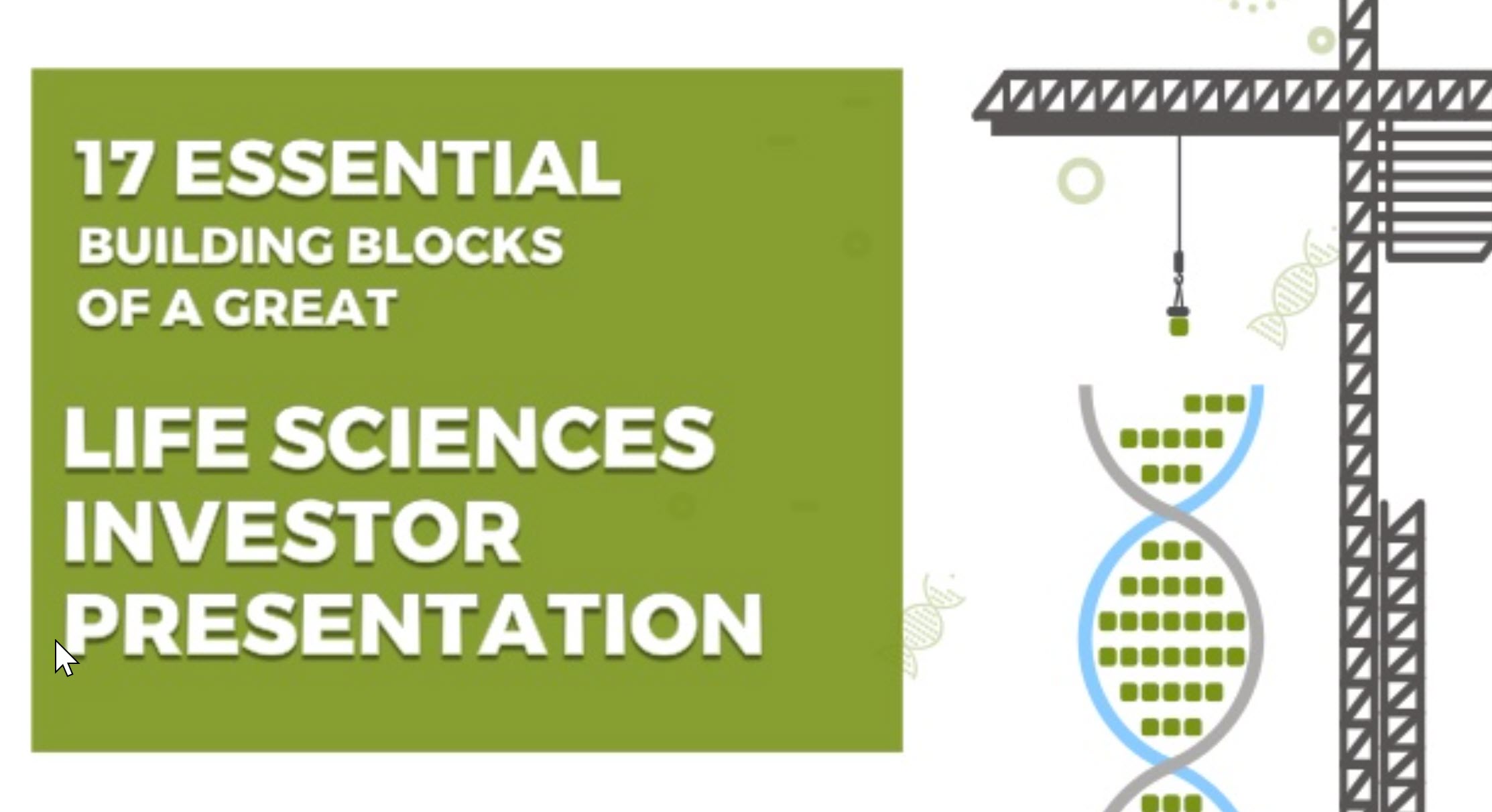
17 building blocks for a great life sciences presentation
Life sciences companies face a number of challenges when presenting to investors. Many, especially early-stage companies, need to sell the investor a dream that is far from realization, that will be extremely difficult to complete, and that has odds of success that are fairly low.
But a methodical approach and some practice can make your pitch clear. And clarity and simplicity make an impact.
All presentations should include all the elements below. The only question is the amount of time allocated to each item. It could be, for example, that the market need is perfectly understood and should be mentioned only in passing.
THE BUILDING BLOCKS CONSISTS OF:
- THE COVER SLIDE – This is the opportunity to let your audience know what you are about. It should reflect the main message or the vision for your company.
- ABOUT US – Use clear, short sentences that will allow investors to understand quickly what your life sciences venture is about.
- MAIN ASSETS – A good “Assets” slide will give the audience a reason to listen to you. What have you done thus far that makes you deserve the investor’s time and money? What are you most proud of?
- THE ADDRESSABLE MARKET – Define your addressable market clearly. Many times I see that the entire market is shown instead of the addressable market. Focus on the relevant market that you will be targeting, and hopefully changing.
- THE MARKET CHALLENGE – There might be a few challenges, but focus on the main ones that your technology will solve.
- YOUR SOLUTION – Here is where you introduce the main character or hero in your drama: your device, drug, or technology.
- TESTIMONIALS – Testimonials are great for strengthening your point. They show market support for your solution. Use an attractive image of the person you are quoting and a one-liner from what they had to say.
- HOW DOES IT WORK? It is best if you can simplify the process into a few main steps and couple these with icons that can be easily understood. This is applicable to any product: A medical device or a drug where you would like to demonstrate the mechanism of action.
- PRE-CLINICAL/CLINICAL DATA – Life science companies tend to bombard this slide with a lot of information but these should be no different from the other slides: They should be simple and straightforward to understand.
- INTELLECTUAL PROPERTY – Highlight your IP strategy and status. Inform the investor of the key components that are patented or patentable (pending/granted/etc…).
- COMPETITION – There are a few ways to show how a competitor compares to your product — through an illustration, and with a table (which is less favorable in a presentation).
- Read more about the effective Use of Tables in PowerPoint Presentations
- TEAM – Stick to the 2 or 3 people that will lead the company. If you need to, write 2 or 3 points about each one with their main achievements in mind (serial entrepreneur, multiple exits, accomplishments, etc.).
- ROADMAP – Try to stick to the main point, presenting the stages on a quarterly basis or an annual basis.
- ADDITIONAL INDICATIONS – If you are like most companies, your technology is applicable to multiple indications. Mention them here briefly, if you must.
- FINANCIALS – Remember that investors will be looking for value-creation milestones. This means they’ll want to know what will be needed to get your venture safely to the next round of financing.
- END SLIDE – Instead of putting a slide that proclaims it to be Q&A time, why don’t you add a message that says what a great investment opportunity this is? Doesn’t that make more sense?
- Visit the resources section on our website





